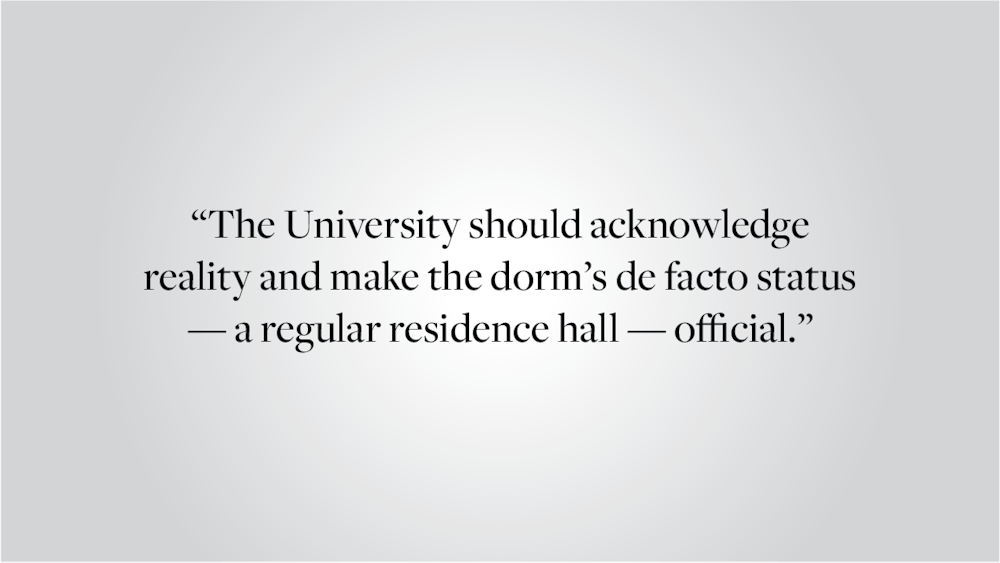The deadline for the Wellness Residential Experience at Sternlicht Commons — or what most students simply call Wellness — recently passed. The dorm is in high demand among students, owing to its spacious suites and brand-new furnishings. The goal of the dorm is lofty: to create a community where learning and promoting wellness practices are front and center.
But in practice, Wellness is just another dorm (albeit one with nicer amenities). The University should treat it as such.
The dorm’s website states that the “Health and Wellness departments and residence hall will serve as an innovative site for peer education, community building, collaboration and outreach in ways that benefit the entire campus.” These are ambitious ideals, and we appreciate the University’s willingness to experiment with new ideas for residential life.
The reality, however, is different.
Wellness programming can feel inaccessible to those who do not already live in the dorm, whether due to limited availability or poor advertising, so it can hardly be said to “benefit the entire campus.” For non-residents, the dorm can tend to inspire jealousy rather than well-being.
The application process for Wellness is another issue. The form, bizarrely, asks students to numerically evaluate their capacity for wellness. It also includes two short answer questions that — given the reward of luxurious amenities — incentivize applicants to stretch the truth about how they integrate wellness into their lifestyles, making it hard to distinguish those with a true passion for wellness from those with a passion for suites with floor-to-ceiling windows.
Most students, we imagine, are concerned about wellness. So who is worthy of living in the Wellness community? Is it those who already practice mindfulness meditation and yoga? Or is it those who would like to practice wellness and would benefit from the resources and support Wellness offers? Whatever criteria the Office of Residential Life uses is opaque and almost certainly nonsensical.
Perhaps a community centered around wellness advocacy would work better in a space where the programming, and not the amenities, would be the main draw. After all, as the Wellness website’s FAQ page notes, “well-being can be achieved without having to live within the building.” Extricating wellness programming from Wellness housing would attract those who are genuinely interested in wellness advocacy, since their housing would be a secondary consideration.
So what should Brown do? The simple solution is to drop the charade. We suspect only a fraction of the applications Wellness received this year was motivated by enthusiasm for wellness, rather than enthusiasm for the building itself. Our last editorial on Wellness was about how stark the difference was between the building and other dorms; clearly, the intense demand comes from its relative luxury.
Wellness is, functionally, just another dorm where Brown undergraduates live — admittedly one that they want to live in badly enough to write a few puffed-up essays for. Treat it as any other dorm, and place it in the housing lottery. Surely this is a more egalitarian way of assigning rooms than through what is now, effectively, a posturing contest.
Again, the intentions behind Wellness are laudable. Implementation, though, has led to ridiculous competition among students for limited slots. The University should acknowledge reality and make the dorm’s de facto status — a regular residence hall — official. And, most crucially, it should find ways to fulfill its mission of supporting wellness beyond the Wellness dorm.
Editorials are written by The Herald’s editorial page board. This editorial was written by its editor Johnny Ren ’23, and members Catherine Healy ’22, Caroline Nash ’22.5, Augustus Bayard ’24, Devan Paul ’24 and Kate Waisel ’24.





